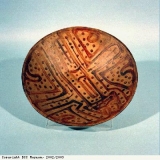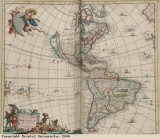South America
When people talk or write about the transatlantic slave trade , they usually concentrate on what happened in the Caribbean and North America. Usually Central and South America are not included in the story, even though they were involved. Europeans colonised what are known as ‘the Americas’. The continent includes the Caribbean, Canada, the USA, and the central and South American countries such as Mexico and Brazil. A mixture of English, French, Spanish and Portugese people travelled across the Atlantic Ocean to settle in the many parts of the Americas.
Spain and Portugal colonised parts of Central and South America. Most of the area south of Mexico was owned by Spain or Portugal. The settlers developed a ‘slave economy’, that is, they used slaves to work on their land. This ‘slave economy’ was different to that found in the Caribbean islands and in North America. Many more slaves were bought. Many were sent to the gold and silver mines rather than to the plantations. More of the enslaved Africans were able to buy their freedom and work as free men rather than as slaves. But in other ways the slave economy in this part of the Americas was the same as that in the Caribbean islands and North America. Many of the enslaved Africans died on the plantations and at the mines, and more were brought in from Africa to replace them.




